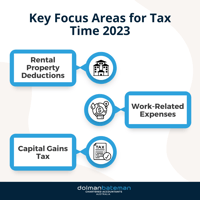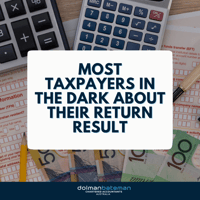Managing tax records can be daunting, but mastering it is essential for maximising deductions and...
Linkedin: Reach, Engagement and Reciprocity of Business
 Reach, Engagement and Reciprocity (RER) is the new marketing philosophy that focuses upon building and maintaining relationships.
Reach, Engagement and Reciprocity (RER) is the new marketing philosophy that focuses upon building and maintaining relationships.
Strategising Reach, Engagement and Reciprocity builds community. Often business and the community appear separate worlds, however today these communities are interfacing through social and business networking. Networking builds personal brand image and corporate reputation.
Relationships are important.
Let’s look at relationships from the perspective of markets. In western societies more markets are reaching market saturation or would be deemed established (matured). That is, the product or service is well known and has stable competitors. Strategically marketers look for more ways to differentiate or to enhance loyalty. New approaches to networking become particularly important when product or service lifecycles are in decline (many competitors, maturation). Therefore, repeat business and finding new clients becomes increasingly important. Building relationships provide stability and prevent products or services from declining further and may reverse the trend, if managed effectively.
Meaningful contacts are important. Do you remember the old adage? It is ‘not what you know it is who you know’. In the world of networking this translates into ‘it’s who you know, who they know and who knows you’. So it is not just importing your contacts list into LinkedIn, it is how you utilise these networks which are a cob web of future possibilities.
So thinking about LinkedIn here are some strategic pointers to help you build relationships and community at the same time.
Reach
Strategic Targeting Finds the Right People:
It is not the size of your database, it is the quality of contacts. Finding the right people. This requires selectivity from your contacts list, not everyone will be the right person for the LinkedIn membership. Depending on your role and objectives you may select people from industry groups, business directories, newspapers, business associations, conference attendees, training programs, business clubs, prior work colleagues, existing contacts and associates. You may want to filter contacts by asking the right questions.
Asking the Right Questions:
The key to selecting the right people is to ask questions, as follows:
- Do they have shared interests (homophily)?
- Do they support me personally or professionally?
- Are they positive with a good reputation?
- Are they relevant to my professional work?
- Are they good networkers?
- Are they industry leaders or experts?
- Are they existing stakeholders e.g. customers, suppliers, colleagues
- Are they future prospects?
- Are they based locally or internationally?
You may build upon this list of questions as you become clearer about what works and what doesn’t. That will be evident by outcomes of the contact.
The Topic:
When opening discussions with people it is important to mindful of the topic. This attracts the right people. Be clear about what you wish to discuss and this will attract those with similar interests and prospects. It is to be relevant, pertinent, informative and interesting. This builds rapport and curiosity. Creating questions in your communications opens people up to participating and contributing their thoughts. It is not about creating a platform for yourself to be heard, but really hearing others. There are many excellent ideas out there waiting to be made visible. So your communication style will attract the right people and reinvigorate the topic you are interested in.
Engagement
Communication is not talking:
We have a range of talking styles such as time fillers, professional speak, polite meeting exchanges, ordering and transacting and this list goes on. We talk to send a message about something we want. To communicate is not talking it is turning off auto pilot and being present as you speak to people. It is being aware through communications of the other person’s needs and sending a message clearly and authentically. Often people remember the honest colleagues in their careers, the ones who were trusted. The ones who not only talked but ‘walked the walk’, if you needed help, a friend was there. It is when someone asks ‘how are you?’ and is actually interested in the answer. So in the written form, it is asking pertinent questions. You may ask the person how the project went and was it what they had hoped for. Asking questions is a signal to others of real interest and that you are listening. Often in emails or written communication we talk very simply, short and sweet, but without much substance. Substance doesn’t have to be long, it is just meaningful to the reader.
The strength of relationships:
LinkedIn provides an interface to enable business people to view profiles and create connections. This gives you a platform to introduce yourself professionally and look for ways in which you may work together. Once you have made a contact with the person, you can enhance the relationship in a range of ways. The strength of relationships facilitates more online interactions and enhances trust. LinkedIn has a model based on the principle of homophily. This theory states that people form ties or bonds with people who have similar interests. This is not rocket science, and we all consciously or unconsciously gravitate towards those who we feel understand us or share something in common. This is particularly pertinent to social networks, yet all business networks are social networks with the primary objective of business outcomes. Nonetheless homophily is essential to making real connections that establish loyalty.
Be entertaining:
At work we can find ourselves in fixed mindsets and engaging in professional speak. To break through the professional façade, you can introduce personality into your writing. However, be mindful of the audience you are speaking to and ensure the humour you share is not discriminating or demeaning, as it may offend. Humour is a natural connector and when you make people laugh, you help them release stress and they warm towards you, it literally can change their day. On average, how often do you think adults and children laugh per day? Children laugh up to 200 times per day and adults, approximately15 times per day. So we do need more positive and spontaneous humour to commence the day with a smile. The key is to not overdo the entertainment but to share something funny occasionally in the interests of building rapport and homophily. People are more open to new ideas when they feel trust and warmth. You don’t want to bombard people or become distracting, it is to naturally connect when you think of it. This is authentic connection rather than cultivating relationships.
Build loyalty:
Loyalty has been a catchphrase for many years in Marketing. It is essentially about emotional connection, self esteem, status that precipitates patterns of sales behaviour that repeat. The brand image literature is about value adding through positioning and building brand loyalty. Loyalty cards were promoted to provide rewards ensuring repeat patronage. In respect of business networks such as LinkedIn, it is about participating and being part of a group. The groups function is to encourage people to join groups, share information and learn what is happening through shared interests.
Reciprocity: It is Your Turn
Often marketers will talk about finding the right people who will get you what you want. What if we are to turn that upside down and work on the idea of giving what you want. That is to be of service through say LinkedIn and share your knowledge and wisdom with others. Some of them may be up and coming professionals, or new contacts open to new ideas and experiences. As you give you receive, people don’t forget genuine assistance. It is the sales people that many are wary of who have only vested interests in your business, not you personally. Remember Edward de Bono and The Six Thinking Hats (lateral thinking), well let’s make a 7th hat, let’s think of a ‘community cap’. Yes there will be times when you give and nothing appears to be happening, other times many contacts generate. As they say ‘what goes around comes around’. You will find you start to enjoy sharing your knowledge as sometimes we forget how much we know and this is the real wealth. You may experience yourself in the first stages of mentoring or being seen as an industry leader, as you are willing to show your cards without fear or favour. As you lead by example others will follow. This is the secret to networking, building and maintaining a reputation.
Building relationships can be facilitated by starting up your own blog. This is a great way to share your knowledge and inspire others to work to their highest potential. Well written blogs are not just pieced together for Google ranking but clear intentions of developing loyalty through serving subscribers. It is to find your voice; this is genuinely connecting with others. People returning to your blog indicate the popularity of your message and provide an intimate connection with your readers, many of whom will be of shared interest in community with you. Blogs can be linked to LinkedIn.
Introducing people to each other is a positive step to helping others achieve their goals. Interestingly enough as you help others, others will help you. This is how service works. Humans are essentially giving by nature, even though many in business are trained to get what they think they want and cultivate relationships that are useful, there is another way. When adopting a service or community attitude, you find your success improves markedly as people work out quickly that you are helping them without expectation. You feel better about yourself and after a while it becomes second nature.
Therefore, reach, engagement and reciprocity ensure you find the right people, understand how to communicate effectively and are prepared to adopt a community spirit online. This is what makes business networking sites liked LinkedIn successful, it is the quality of people that make the difference.



